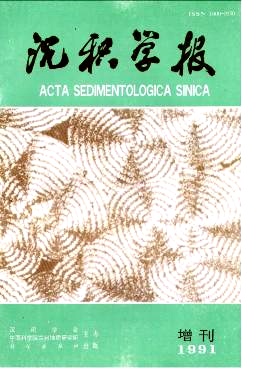Enclosed Organic Matter- Another Aspect of Recognizing Oil-forming Mechanism of Carbonate Rocks
- Publish Date: 1991-12-31
Abstract: The content of organic matter enclosed in carbonate minerals is more abundant than that of extractable organic matter in many carbonate source rock. The maturity of enclosed organic matter is lower generally. Enclosed organic matter contains more abundant asphaltene and non- hydrocarbon compounds than extractable organic matter. Most of enclosed organic matter exist in the rings of calcite and dolomite. These rings is due to secondary growth in a certain stage of diagenesis. During the diagenesis, the soluble organic matter is produced step by step, in the same time, carbonate minerls secondarily grow or recrystallize and enclose soluble organic matter. The results of simulating experiments under high temperature and pressure show that this kind of organic mat'er nclosed in carbonate minerals can be released and converted into hydrocarbons. It is an effective oil-forming material. In addition to the difference of mineral catalytic power, the existence of enclosed organic matter is one of the reasons that the maturing speed of carbonate organic matter is lower than that of shale organic matter. In supermature stage of carbonate rocks(R01.3%), soluble organic matter, separating out from enclosed organic matter, makes bitumen A' s maturity lower. In the Lower Paleozoic carbonate rocks of TArim Basin, maturity of bitumen A is lower than solid asphalt' s. The 20S/(20R+20S) ratio of C29 sterane in bitumen A is 0.43 and 22S/((22S+22R) ratio of C3117α(H), 21β(H) hopane is 0.43. Both of them are lower than their equilibrium values. The solid asphalt reflectance in these carbonate rocks is equal to the vitrnite reflectance of 1.3%. As results of separating of enclosed organic matter, crystal hole oil seeps are widespread in the supermature carbonate rocks. In supermature stage, enclosed organic matter still can be coverted into liquid hydrocarbons. This is another oil- forming mechanism different from the oil- forming mechanism of kerogen. It may be of far reaching importance to recognize this kind of oil-froming mechanizm because huge thick-bedded carbonate rocks exist in the deep of the Tarim Basin.
| Citation: | Zhou Zhongyi, Fan Shanfa, Xie Juexin. Enclosed Organic Matter- Another Aspect of Recognizing Oil-forming Mechanism of Carbonate Rocks[J]. Acta Sedimentologica Sinica, 1991, 9(S1): 112-119. |






 DownLoad:
DownLoad: